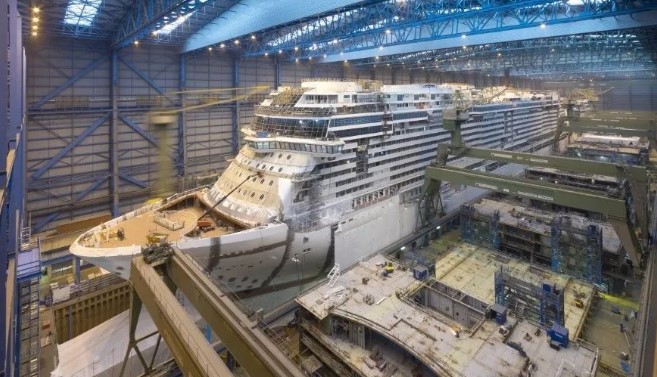Projects
High Requirements For Laser Technology In The Shipbuilding Industry
Industry Overview
The shipbuilding industry refers to the industry that designs, builds, and repairs various types of ships and marine engineering equipment. Ship manufacturing is a complex and diversified industry that covers fields such as commercial ships, military vessels, and marine engineering equipment.

Characteristics of the shipbuilding industry
- Highly specialized: Shipbuilding is a highly specialized industry that requires professional knowledge and technology in multiple fields such as ship design, hull structure, mechanical equipment, electrical systems, etc. Its manufacturing mainly relies on steel raw materials. With the upgrading of modern manufacturing technology, steel processing cannot do without laser technology, such as laser cutting technology, laser welding technology, laser cleaning technology, etc. Shipbuilding enterprises usually organize specialized technical teams and engineers to ensure that the design and construction of ships comply with international and industry standards.
- Large scale project: Ship manufacturing is a large-scale project that involves a large amount of capital investment and human resources. Building a ship requires complex engineering design, material procurement, manufacturing and processing, testing and debugging, and other multiple processes, with a long project cycle.
- High dependence on international trade: The demand for the shipbuilding industry mainly comes from international trade and the shipping industry. The growth of global trade and cross-border logistics has provided a huge market demand for the shipbuilding industry. Shipbuilding enterprises usually cooperate with international shipowners, shipping companies, etc. to accept orders and build ships according to customer requirements.
- Technological innovation and environmental requirements: The shipbuilding industry is facing increasing technological innovation and environmental requirements. Shipbuilding enterprises need to continuously develop new technologies and materials to improve ship fuel efficiency, reduce emissions, and environmental impact. For example, advanced computer-aided design (CAD) and computer-aided manufacturing (CAM) technologies are used in ship design to improve production efficiency and quality.
- International competition and regional division of labor: The shipbuilding industry is a globally competitive industry. Different countries and regions have different shipbuilding enterprises and strengths, forming a certain regional division of labor.
- Long term capital return cycle: Due to the long construction cycle of ships, shipbuilding enterprises need to invest a large amount of funds and resources, and can only obtain returns after a period of time. This poses certain challenges for enterprise fund management and long-term planning.
Summary
The shipbuilding industry is a highly specialized and large-scale industry, driven by the demand of international trade and shipping industry. Technological innovation, environmental requirements, and international competition are important characteristics of the industry. Among them, steel raw materials and laser processing technology have great advantages.
Enterprises need to possess professional knowledge and technology, while flexibly responding to market demand and industry changes to maintain competitiveness and sustainable development.



































